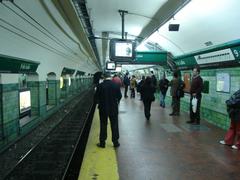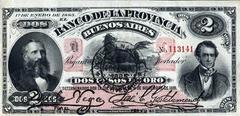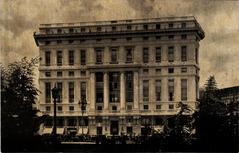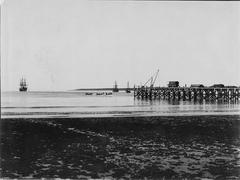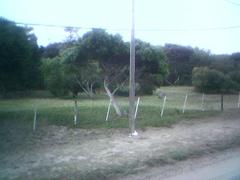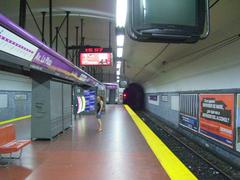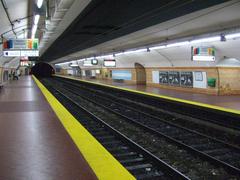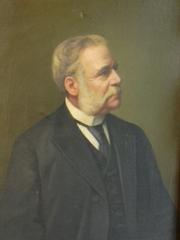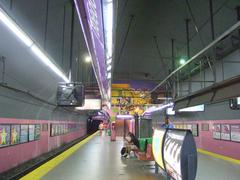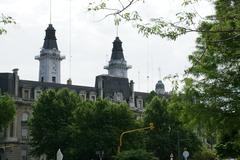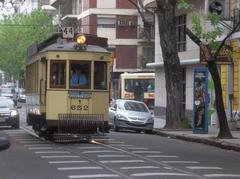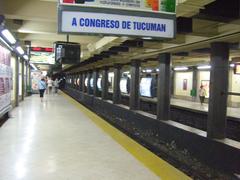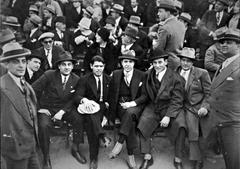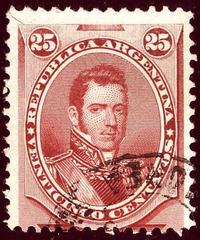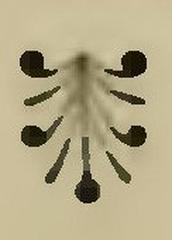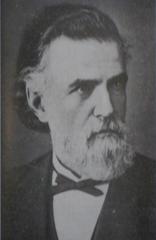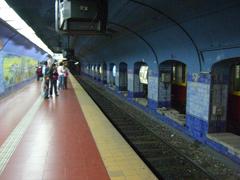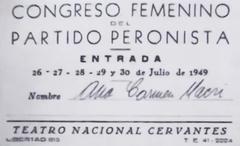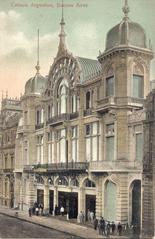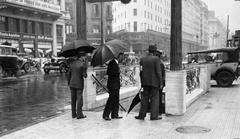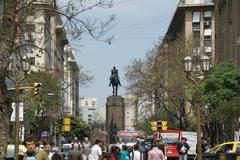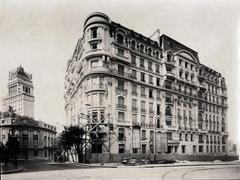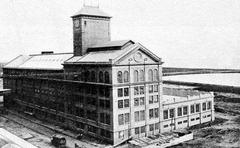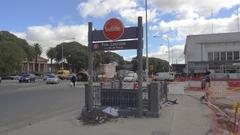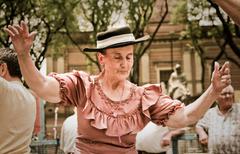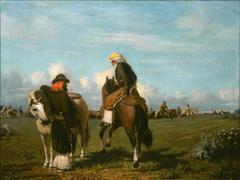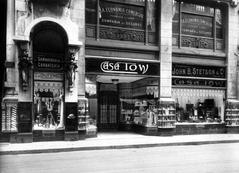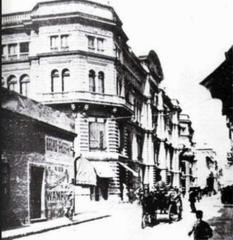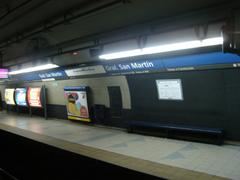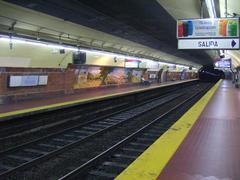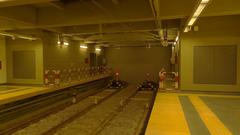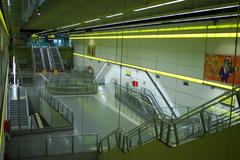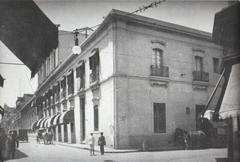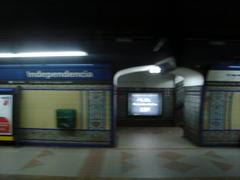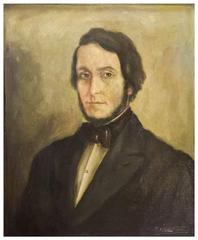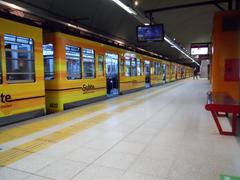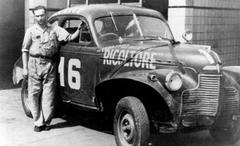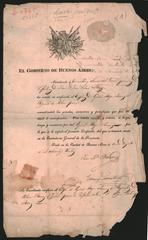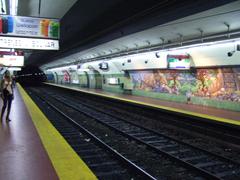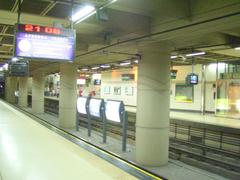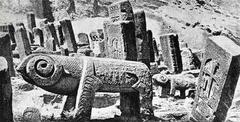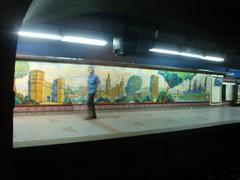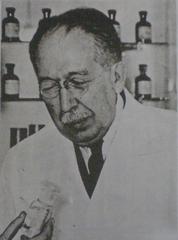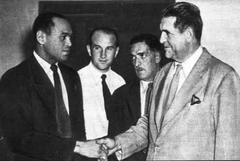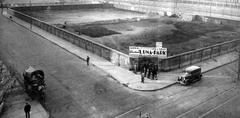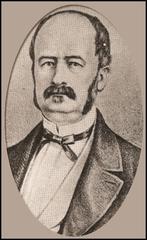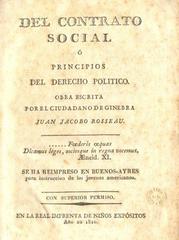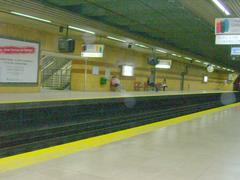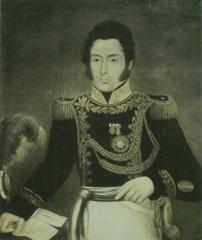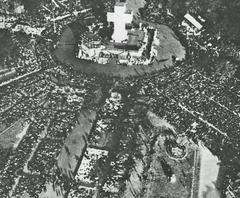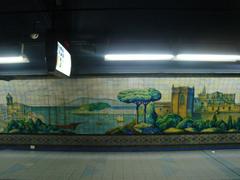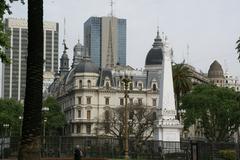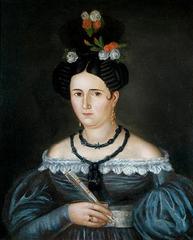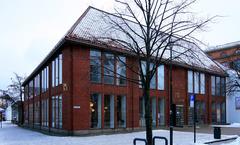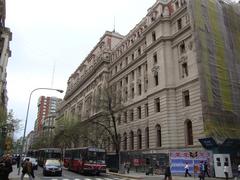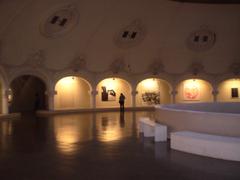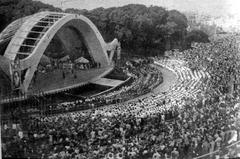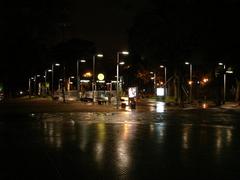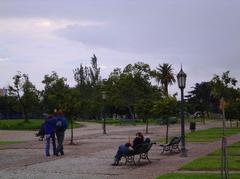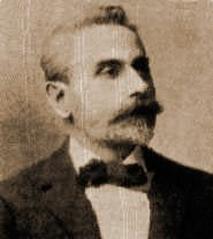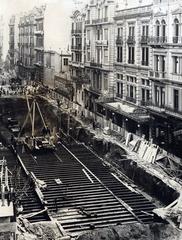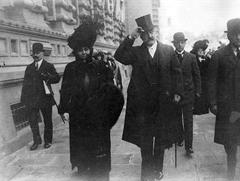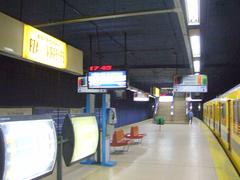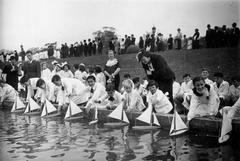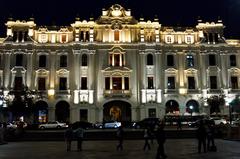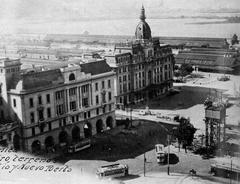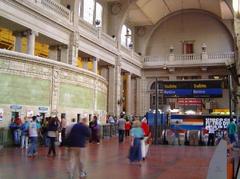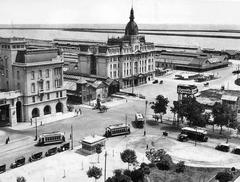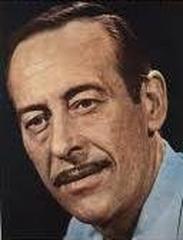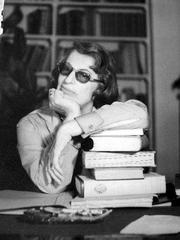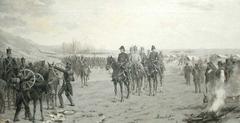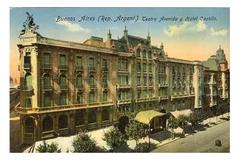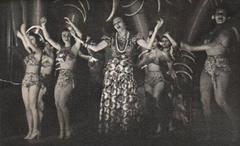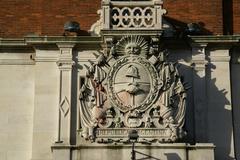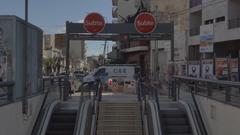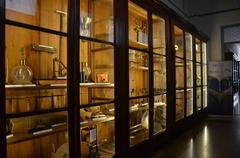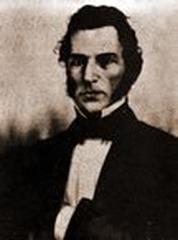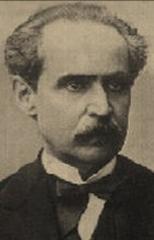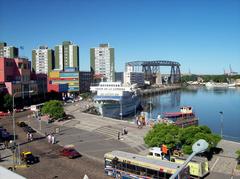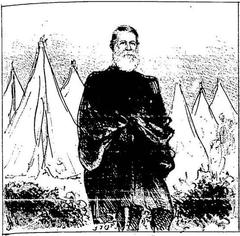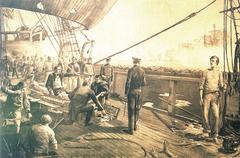
Comprehensive Guide to Visiting Buenos Aires, Argentina
When to Visit: 14/08/2024
Why Buenos Aires Will Steal Your Heart
Welcome to Buenos Aires, Argentina—a city where European sophistication dances effortlessly with Latin fervor, creating an intoxicating blend of culture, history, and modernity. Picture yourself strolling through cobblestone streets, the aroma of sizzling asado filling the air, and the passionate strains of tango music echoing from every corner. Buenos Aires is often dubbed the ‘Paris of South America,’ but it’s so much more than that. It’s a city that captivates the senses and the soul, offering a unique journey through time and space. From its early colonial days to its modern-day vibrancy, Buenos Aires is a living, breathing tapestry of stories waiting to be explored (Introducing Buenos Aires).
Imagine stepping back to 1536 when Spanish explorer Pedro de Mendoza founded the original settlement, only for it to be abandoned shortly after. Fast forward to the 19th century, and the city was at the heart of Argentina’s fight for independence, blossoming into a bustling trade hub. The late 19th and early 20th centuries saw waves of European immigrants transforming the city’s landscape and culture, turning Buenos Aires into a melting pot of architectural styles and artistic expressions (ThoughtCo).
But Buenos Aires isn’t just about its past. Today, it’s a vibrant metropolis offering a plethora of experiences—from the historic charm of San Telmo and the colorful streets of La Boca to the modern elegance of Puerto Madero and the cultural richness of Recoleta. Whether you’re a history buff, a foodie, an art lover, or simply a curious traveler, Buenos Aires promises a journey that will leave you enchanted. So, grab your walking shoes and let’s explore the city that never sleeps, where every corner has a story waiting to be discovered (Bounce).
What You’ll Discover
- Historical Background
- Early Foundations
- Colonial Era and Economic Struggles
- The 19th Century: Independence and Growth
- Immigration and Urban Transformation
- Political Turmoil and Economic Prosperity
- The 20th Century: Industrialization and Cultural Flourishing
- Modern Era: Political and Economic Challenges
- Buenos Aires Today
- Key Historical Sites
- Top Attractions
- San Telmo: Time Travel Through Tango
- Plaza de Mayo: The Pulse of Argentine History
- La Boca: A Riot of Colors and Culture
- Recoleta Cemetery: A Lavish Resting Place
- Teatro Colón: The Pinnacle of Performances
- Palermo: The Trendsetter’s Paradise
- Museo Nacional de Bellas Artes: An Art Lover’s Dream
- Puerto Madero: Modern Elegance by the Waterfront
- El Ateneo Grand Splendid: A Bookstore Like No Other
- Feria de Mataderos: A Taste of Tradition
- Museo Evita: A Tribute to an Icon
- Jardín Japonés: A Slice of Serenity
- Museo de Arte Latinoamericano de Buenos Aires (MALBA): Contemporary Creativity
- Cultural Insights
- Tango: The Heartbeat of Buenos Aires
- Culinary Delights: A Gastronomic Journey
- Historical Landmarks: A Walk Through Time
- Art and Architecture: A Visual Feast
- Music and Nightlife: The City That Never Sleeps
- Festivals and Events: Celebrating Culture
- Sports: A Passionate Affair
- Literature and Bookstores: A Literary Haven
- Local Markets: A Shopper’s Paradise
- Visitor Tips: Making the Most of Your Trip
Historical Background
Early Foundations
Imagine stepping into a time machine and traveling back to 1536. You’d find yourself in the middle of a bustling settlement called Nuestra Señora Santa María del Buen Aire, founded by Spanish explorer Pedro de Mendoza. But hold on – this early version of Buenos Aires didn’t last long. Local indigenous groups and a dire lack of supplies forced the settlers to abandon ship. Fast forward almost 50 years, and Juan de Garay arrives with a more robust expedition, refounding the city as Ciudad de Trinidad. And thus, Buenos Aires began its journey (Britannica).
Colonial Era and Economic Struggles
Picture Buenos Aires in colonial times: a city with boundless potential but shackled by restrictive trade policies. The city’s destiny was controlled from faraway Lima, the capital of the Viceroyalty of Peru. Only select ports like Callao could trade with Spain, leaving Buenos Aires as a mere backwater. Imagine waiting six months for goods to travel from Callao by oxcart! This setup stifled the city’s economic growth, making it a sleepy colonial outpost (Britannica).
The 19th Century: Independence and Growth
Buenos Aires started to shake off its colonial chains in the early 19th century. The city was a key player in Argentina’s fight for independence, achieved in 1816. But freedom came with its own set of challenges. England and France made attempts to seize Buenos Aires in the mid-1800s. Despite these threats, the city blossomed as a trade port. The new railroads connected the port to the country’s interior, fueling a thriving leather trade. Buenos Aires was becoming a bustling hub of commerce and culture (ThoughtCo).
Immigration and Urban Transformation
From 1864 to 1914, Buenos Aires was like a magnet for immigrants, especially Europeans. The city’s population skyrocketed, and its landscape transformed. Inspired by Parisian architecture, avenues, squares, and monuments sprang up. If you strolled through Buenos Aires back then, you’d see the newly built Palermo Park, the Hippodrome, and the Congress Palace. The iconic Colon Theatre also opened its doors, reflecting the city’s cultural aspirations (Introducing Buenos Aires).
Political Turmoil and Economic Prosperity
The late 19th and early 20th centuries were a rollercoaster for Buenos Aires. The city was a battleground between federalists and unitarians, each vying for control. Juan Manuel de Rosas, a prominent figure, ruled with an iron fist, using his notorious “mazorca” political police. Despite the political chaos, Buenos Aires thrived economically, thanks to its booming livestock sector and leather exports. The city’s growth was briefly interrupted by the war with Brazil but soon resumed its upward trajectory (Introducing Buenos Aires).
The 20th Century: Industrialization and Cultural Flourishing
The 20th century ushered in rapid industrialization for Buenos Aires. The city became a melting pot, attracting immigrants from all over Europe. This diverse population enriched Buenos Aires’s cultural fabric. The city’s love for European high culture was evident with the opening of the Colón Theater, symbolizing Buenos Aires’s cultural ambitions (ThoughtCo).
Modern Era: Political and Economic Challenges
The mid-20th century brought significant political and economic turmoil. Buenos Aires faced periods of military dictatorship, economic crises, and social unrest. Yet, it also experienced cultural and artistic flourishing. The city became a haven for literature and film, home to literary giants like Jorge Luis Borges and Julio Cortázar (ThoughtCo).
Buenos Aires Today
Today, Buenos Aires is a vibrant metropolis, teeming with life and culture. It’s a city of contrasts – from the luxury of Recoleta to the culinary delights of Palermo and the historic charm of San Telmo. Each neighborhood, or ‘barrio,’ offers a unique experience. And guess what? The city is considered very safe, making it a perfect destination for anyone looking to explore its rich heritage and dynamic urban life (Bounce).
Key Historical Sites
Buenos Aires is a treasure trove of historical sites. Here are some you shouldn’t miss:
- Plaza de Mayo: The heart of Buenos Aires’s political and cultural life, surrounded by iconic buildings like the Casa Rosada and the Metropolitan Cathedral (PlanetWare).
- Recoleta Cemetery: A labyrinth of elaborate tombs and mausoleums, including the resting place of Eva Perón (The Crazy Tourist).
- Teatro Colón: One of the world’s most prestigious opera houses, offering guided tours and breathtaking performances (ThoughtCo).
- San Telmo: A neighborhood that feels like stepping back in time, with its cobblestone streets, antique shops, and lively Sunday market (PlanetWare).
Interactive Elements
To make your exploration of Buenos Aires even more engaging, take on these challenges:
- Architectural Scavenger Hunt: Find specific architectural details in different neighborhoods. For example, locate the French-style buildings in Recoleta or the colonial facades in San Telmo.
- Empanada Quest: Embark on a quest to find the best empanada in San Telmo. Sample different varieties and vote for your favorite!
Local Lingo Lessons
Brush up on your Spanish with these key phrases and Argentine slang:
- Hola (Hello)
- Gracias (Thank you)
- ¿Dónde está el café más cercano? (Where is the nearest café?)
- Che (Hey) – Used to get someone’s attention
- Boludo (Dude) – Informal slang among friends
Time-Based Itineraries
Plan your journey with these sample itineraries:
- One-Day Historical Tour: Start at Plaza de Mayo, visit the Casa Rosada, head to Recoleta Cemetery, and finish your day in San Telmo.
- Cultural Day Out: Begin with a tour of the Teatro Colón, stroll through Palermo Park, and enjoy an evening at a local tango show.
FAQ Section
- What’s the best time of year to visit Buenos Aires?
- The best time to visit is during the spring (September to November) or fall (March to May) when the weather is mild and pleasant.
- How safe is Buenos Aires for solo travelers?
- Buenos Aires is generally safe for solo travelers, especially in well-known areas. However, it’s always best to stay alert and avoid less crowded areas at night.
Seasonal Highlights
Experience Buenos Aires’s unique seasonal events:
- Tango Festival (August): A month-long celebration of tango with performances, classes, and competitions.
- Jacaranda Blooming (November): Witness the city streets come alive with the vibrant purple blossoms of jacaranda trees.
Conclusion
Buenos Aires’s history is a vibrant tapestry woven with threads of colonial struggles, economic booms, political upheavals, and cultural triumphs. This rich past is etched into the city’s architecture, neighborhoods, and institutions. Whether you’re a history buff, a culture enthusiast, or just a curious traveler, Buenos Aires promises a journey through time and an unforgettable experience. Explore the city with Audiala, your ultimate tour guide app, and let Buenos Aires reveal its secrets to you.
Top Attractions in Buenos Aires, Argentina
Introduction
Welcome to Buenos Aires, where European elegance meets Latin passion! Known as the “Paris of South America,” Buenos Aires is a city that will sweep you off your feet with its rich history, vibrant culture, and infectious energy. Imagine the scent of fresh empanadas wafting through the air, the sound of tango music filling the streets, and the sight of colorful murals around every corner. Are you ready to explore?
San Telmo: Time Travel Through Tango
Step into San Telmo, the heart of Buenos Aires’ bohemian spirit. Picture this: cobblestone streets lined with colonial-era buildings and street performers dancing the tango as if their lives depend on it. This neighborhood is a goldmine for history buffs and culture lovers alike. Dive into El Zanjón de Granados, rumored to be the city’s original settlement. Explore the labyrinthine ruins of 18th and 19th-century structures and let your imagination run wild. Don’t forget to hunt for hidden treasures in the antique shops or lose yourself in the bustling San Telmo Market. Pro tip: Catch a traditional tango show at El Viejo Almacén Tango Cena—it’s a performance you won’t forget!
Plaza de Mayo: The Pulse of Argentine History
Plaza de Mayo is where history and politics intersect in Buenos Aires. This iconic square has witnessed numerous pivotal events, including the May Revolution of 1810. Surrounded by landmarks like the Casa Rosada—the pink presidential palace—and the Buenos Aires Metropolitan Cathedral, this is the perfect spot to soak in the city’s political and historical essence. Fun fact: Eva Perón, Argentina’s beloved First Lady, once addressed throngs of supporters from the balcony of Casa Rosada. Want more? Check out the Museo Nacional del Cabildo to delve deeper into Argentine history.
La Boca: A Riot of Colors and Culture
La Boca is a neighborhood that practically bursts with color and life. Famous for Caminito Street, a vibrant stretch filled with street art and tango dancers, La Boca is an artistic haven. The neighborhood’s brightly painted houses and murals are a feast for the eyes. Soccer fans, rejoice! This is also home to Boca Juniors, one of Argentina’s most famous football clubs. Tour the legendary La Bombonera stadium and get a taste of the local sports culture. La Boca is a sensory overload in the best way possible.
Recoleta Cemetery: A Lavish Resting Place
Recoleta Cemetery isn’t just any cemetery; it’s a marble paradise. Wander through this labyrinth of ornate tombs and statues, and you’ll find the graves of many notable Argentines, including Eva Perón. This peaceful retreat offers a unique blend of history and artistry. Located in the upscale Recoleta neighborhood, it’s also a stone’s throw from charming cafes and boutiques. Perfect for a tranquil afternoon.
Teatro Colón: The Pinnacle of Performances
Teatro Colón is an architectural marvel and one of the world’s premier opera houses. The theater’s stunning design and exceptional acoustics have hosted countless legendary performances. Whether you take a guided tour or attend a show, you’ll be awestruck by its grandeur. The 2024 season promises a variety of spectacular performances, so don’t miss out!
Palermo: The Trendsetter’s Paradise
Palermo, the largest neighborhood in Buenos Aires, is the epitome of cool. From the fashion-forward boutiques of Palermo Soho to the buzzing nightlife of Palermo Hollywood, there’s something for everyone. Don’t miss Bosques de Palermo, a sprawling park with beautiful gardens, lakes, and walking paths. Whether you’re a shopaholic, a foodie, or a nature lover, Palermo has you covered.
Museo Nacional de Bellas Artes: An Art Lover’s Dream
Art aficionados, rejoice! The Museo Nacional de Bellas Artes boasts an extensive collection of Argentine and international masterpieces. From Goya to Van Gogh, the museum’s halls are filled with treasures. Best of all, admission is free! Located in the Recoleta neighborhood, it’s a must-visit for anyone looking to immerse themselves in the world of fine art.
Puerto Madero: Modern Elegance by the Waterfront
Puerto Madero is Buenos Aires’ answer to modern luxury. This waterfront neighborhood features high-end restaurants, trendy bars, and luxury apartments. Take a leisurely stroll along the promenade, enjoy a meal with a view, or hop on a boat tour for a different perspective of the city. Don’t miss the Puente de la Mujer, a striking pedestrian bridge designed by Santiago Calatrava.
El Ateneo Grand Splendid: A Bookstore Like No Other
El Ateneo Grand Splendid isn’t your average bookstore; it’s a literary paradise set in a former theater. The ornate balconies, frescoed ceilings, and red stage curtains make it a stunning place to browse for books. Relax in the cafe with a good read and soak in the grandeur. A must-visit for book lovers and architecture enthusiasts alike.
Feria de Mataderos: A Taste of Tradition
Every Sunday, the Feria de Mataderos brings Argentine culture to life. This traditional market offers handmade crafts, delicious foods, and live performances. Watch folk dances, listen to local music, and indulge in empanadas and asado. It’s the perfect place to experience authentic Argentine culture and pick up unique souvenirs.
Museo Evita: A Tribute to an Icon
The Museo Evita is dedicated to the life and legacy of Eva Perón. Housed in a beautiful Palermo mansion, the museum features artifacts, photographs, and documents that tell her compelling story. Learn about her advocacy for women’s rights and her lasting impact on Argentine society. It’s a moving tribute to one of Argentina’s most influential figures.
Jardín Japonés: A Slice of Serenity
Escape the city’s hustle and bustle at the Jardín Japonés in Palermo. This tranquil Japanese garden features koi ponds, bridges, and meticulously manicured plants. Stroll through the peaceful landscape, visit the tea house for a traditional ceremony, and let the serenity wash over you.
Museo de Arte Latinoamericano de Buenos Aires (MALBA): Contemporary Creativity
MALBA is a haven for contemporary art lovers. The museum showcases works from Latin America’s most celebrated artists, including Frida Kahlo and Diego Rivera. With rotating exhibitions and cultural events, MALBA is a dynamic and engaging destination. Located in Palermo, it’s a must-see for anyone interested in modern art.
Conclusion
Buenos Aires is a city that never ceases to amaze. From the historic charm of San Telmo and La Boca to the modern allure of Puerto Madero, there’s something for everyone. Whether you’re exploring art museums, enjoying the nightlife, or savoring local cuisine, Buenos Aires promises a diverse and unforgettable experience. For an even richer journey, download Audiala, our tour guide app, to uncover hidden gems and expert insights. See you in Buenos Aires, where every corner has a story waiting to be discovered!
Buenos Aires: A Dance of Culture, Flavor, and History
Tango: The Heartbeat of Buenos Aires
Step into Buenos Aires, and you step into the rhythm of tango. Born in the gritty barrios, this dance is the city’s soul. Imagine the streets filled with the passionate embrace of dancers, and you’ll find no better place to feel this than at La Ventana. But for a twist, sway over to Despelote Tango Queer, where tango welcomes all in a rainbow of inclusivity (BBC).
Culinary Delights:A Gastronomic Journey
Buenos Aires is a feast for the senses. Picture biting into a crispy empanada, or savoring the smoky flavor of an Argentine asado. Want a true taste adventure? Join a food tour in Palermo and sample morcilla, provoleta with chimichurri, and alfajores con dulce de leche (Miss Tourist). And don’t forget to share a mate with friends – it’s more than a drink; it’s a social ritual.
Historical Landmarks: A Walk Through Time
Stroll through Buenos Aires, and the past whispers through every corner. Plaza de Mayo stands as a testament to Argentina’s turbulent history, flanked by the pink-hued Casa Rosada (In Lovely Blue). Don’t miss the haunting weekly marches of Las Madres de Plaza de Mayo, a poignant reminder of the city’s resilience (The Broke Backpacker).
Art and Architecture: A Visual Feast
Buenos Aires is the Paris of South America, with its grand neoclassical buildings and vibrant art scene. Wander through the Museo Nacional de Bellas Artes, or let the street art in Palermo and La Boca tell you stories in vivid colors (Condé Nast Traveler).
Music and Nightlife: The City That Never Sleeps
When the sun sets, Buenos Aires transforms into a playground. Feel the beat at La Bomba de Tiempo, a drum show that pulses with energy (Miss Tourist). For a quieter vibe, slip into a speakeasy like The Hole, where the cocktails are as smooth as the jazz (Miss Tourist).
Festivals and Events: Celebrating Culture
The city’s calendar is packed with celebrations. Film buffs will love the Buenos Aires International Festival of Independent Cinema (BAFICI) (Secrets of Buenos Aires). For a taste of tradition, the Feria de Mataderos offers folk music, dancing, and delicious foods every week (The Broke Backpacker).
Sports: A Passionate Affair
Football in Buenos Aires isn’t just a game; it’s a religion. Catching a match at La Bombonera is a bucket-list experience, with the stadium vibrating with the fervor of Boca Juniors’ fans (Condé Nast Traveler). For a change of pace, head to the Hipódromo Argentino de Palermo for a day at the races (Secrets of Buenos Aires).
Literature and Bookstores: A Literary Haven
Book lovers, rejoice! Buenos Aires is a literary treasure trove. El Ateneo Grand Splendid, a bookstore in a former theater, is a must-visit with its majestic interiors (In Lovely Blue). The Buenos Aires International Book Fair is a highlight for bibliophiles (Secrets of Buenos Aires).
Local Markets: A Shopper’s Paradise
From antiques to artisan crafts, Buenos Aires’ markets are a shopper’s dream. San Telmo Market is a beloved spot for unique finds and local flavor (The Broke Backpacker). For trendy boutiques, Palermo Soho is the place to be (Miss Tourist).
Visitor Tips: Making the Most of Your Trip
Make your trip to Buenos Aires unforgettable with these tips:
- Best Time to Visit: Spring (October-November) and fall (February-April) are perfect for pleasant weather and blooming jacaranda trees (Secrets of Buenos Aires).
- Safety: Stay alert in crowded areas and keep an eye on your belongings (Sol Salute).
- Transportation: Use public transport, taxis, or ride-sharing services. The Subte (subway) is efficient and easy to navigate (Sol Salute).
- Currency: Carry some cash in Argentine Pesos, but credit cards are widely accepted (Secrets of Buenos Aires).
Dive into the vibrant tapestry of Buenos Aires with Audiala. Whether you’re dancing, dining, or discovering hidden gems, our audio guides offer beautifully crafted, concise yet deep insights to enhance your adventure.
Your Buenos Aires Adventure Awaits
As your journey through Buenos Aires comes to a close, it’s clear that this city is far more than a collection of historical sites and cultural landmarks—it’s an experience that stays with you long after you’ve left. From the rhythmic passion of tango that pulses through its streets to the rich aromas of its culinary delights, Buenos Aires engages all your senses and leaves an indelible mark on your heart. It’s a city of contrasts and harmonies, where colonial architecture stands proudly beside modern skyscrapers, and where each barrio offers its own unique flavor and charm (BBC).
In Buenos Aires, history is not confined to museums; it’s alive in the streets, the buildings, and the people. From the political fervor of Plaza de Mayo to the artistic vibrancy of La Boca, the city’s past and present blend seamlessly, offering endless stories and adventures. Whether you’re exploring the grand Teatro Colón, browsing the shelves of El Ateneo Grand Splendid, or simply enjoying a mate in one of its many parks, Buenos Aires invites you to be a part of its ongoing narrative (Condé Nast Traveler).
For those eager to delve deeper into the city’s secrets and stories, Audiala is your perfect companion. This tour guide app offers beautifully crafted, concise yet deep audio guides that reveal hidden gems and expert insights, enhancing your exploration experience. Download Audiala before your visit, and let Buenos Aires unfold its magic and mystery, one story at a time. See you in Buenos Aires, where every corner has a tale waiting to be told (Secrets of Buenos Aires).
Where to Learn More
- Britannica. (n.d.). Buenos Aires History. https://www.britannica.com/place/Buenos-Aires/History
- ThoughtCo. (n.d.). The History of Buenos Aires. https://www.thoughtco.com/the-history-of-buenos-aires-2136353
- Introducing Buenos Aires. (n.d.). Buenos Aires History. https://www.introducingbuenosaires.com/history
- Bounce. (n.d.). Buenos Aires Visitor Guide. https://usebounce.com/guides/buenos-aires/visitor
- BBC. (2024, June 16). A Queer Dance Champion’s Guide to Experiencing Queer Tango in Buenos Aires. https://www.bbc.com/travel/article/20240616-a-queer-dance-champions-guide-to-experiencing-queer-tango-in-buenos-aires
- Miss Tourist. (n.d.). Unique Things to Do in Buenos Aires, Argentina. https://misstourist.com/unique-things-to-do-in-buenos-aires-argentina/
- In Lovely Blue. (n.d.). Complete Buenos Aires City Guide. https://inlovelyblue.com/complete-buenos-aires-city-guide/
- The Broke Backpacker. (n.d.). Buenos Aires Itinerary. https://www.thebrokebackpacker.com/buenos-aires-itinerary/
- Condé Nast Traveler. (n.d.). Buenos Aires. https://www.cntraveler.com/destinations/buenos-aires
- Secrets of Buenos Aires. (n.d.). Buenos Aires. https://secretsofbuenosaires.com/
- Sol Salute. (n.d.). Guide to Buenos Aires. https://solsalute.com/blog/guide-buenos-aires/
